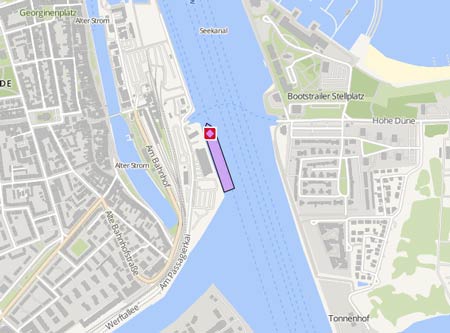DAMGRACHT
Course/Position
Latest ports
Latest Waypoints
Latest news
Report: Engine shutdown due to false alarm caused collision
A false alarm aboard the 'Damgracht', that caused the main engine of the to shut down and possibly highly humid weather conditions have been blamed for the collision of the 'AP Revelin' and the 'Damgracht' on Aug 21, 2022,, that caused $3.4 million of damages to two vessels transiting Sabine Pass in Texas according to a report released from the National Transportation Safety Board. Based on their analysis of the events leading up to the collision, the safety group was advising engineers to be on the lookout for possible water buildup and to undertake further inspections after conducting maintenance where the engine oil lube system could be impacted. The Damgracht' was inbound to the port of Beaumont, when it encountered an engine alarm and automatic shutdown that resulted in a loss of propulsion power. The vessel was moving at 15 knots with a pilot aboard. As the chief engineer worked to inspect that oil mist detector to determine the cause of the alarm, the vessel issued emergency signals. Moving at about 7.4 knots after the loss of propulsion power, the Damgracht’s bow veered to port. The pilot ordered a hard right rudder. Unable to stop the vessel or regain control, the bow of the vessel struck the outbound 'AP Revelin'. About 40 feet of the 'AP Revelin'’s hull plating near the stern was peeled back exposing the compartments all above the waterline to the outside. She had been about half a mile away from the 'Damgracht', and the pilot attempted to maneuver to prevent the collision when the approaching vessel lost propulsion. The 'AP Revelin' was traveling at 9,3 knots and attempted to increase main engine speed but with the vessel veering across the channel it proved impossible to stop the collision. Most of the damage was to the stern of the 'AP Revelin'. nspections showed acceptable levels of denting on the bow of the 'Damgracht'. The NTSB reports the repair costs at $3.4 million with the 'AP Revelin' being out of service for 35 days of repairs. The investigation showed that the prior day the 'Damgracht', which was carrying bags of cement and parts for a power plant, experienced an engine problem that also caused it to lose power and forced it to anchor to make repairs overnight. The crew determined they had to install a head gasket and cylinder head on the no. 6 cylinder in the main engine. The repairs were completed and the crew undertook normal testing. When the pilot boarded the vessel in the morning, he was told it had been routine maintenance and everything was in good working order. The engineer on the 'Damgracht' told the NTSB that after the alarm and loss of power, he had verified that the main engine bearing temperatures and crankcase pressure were normal. He opened the oil mist detector, which had caused the shutdown when it sensed "high oil mist density.” He cleared the sensor and reset it and was able to restart the engine but he completed these steps only after the collision. The NTSB determineed that the repair the prior night had introduced the potential of cooling water into the engine lube system. They also reported that there were extreme high humidity weather conditions which along with extreme cold temperatures can increase the water content within engine lube oil sumps. The report instructed engine crews to inspect and test the lubricating oil system for water intrusion during maintenance operations. They also recommend ensuring lube oil purifying equipment is functioning properly to remove any water or other contamination that could result in the lube oil.
Upload News

